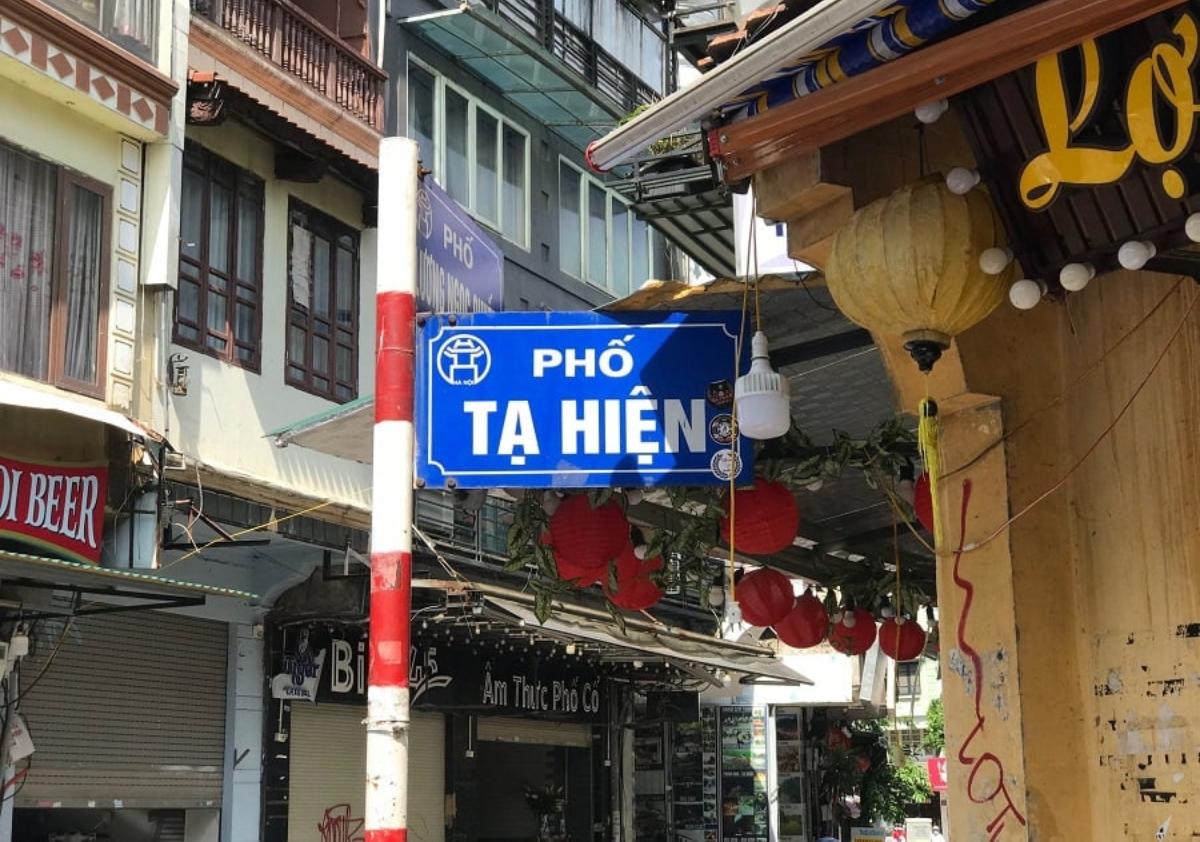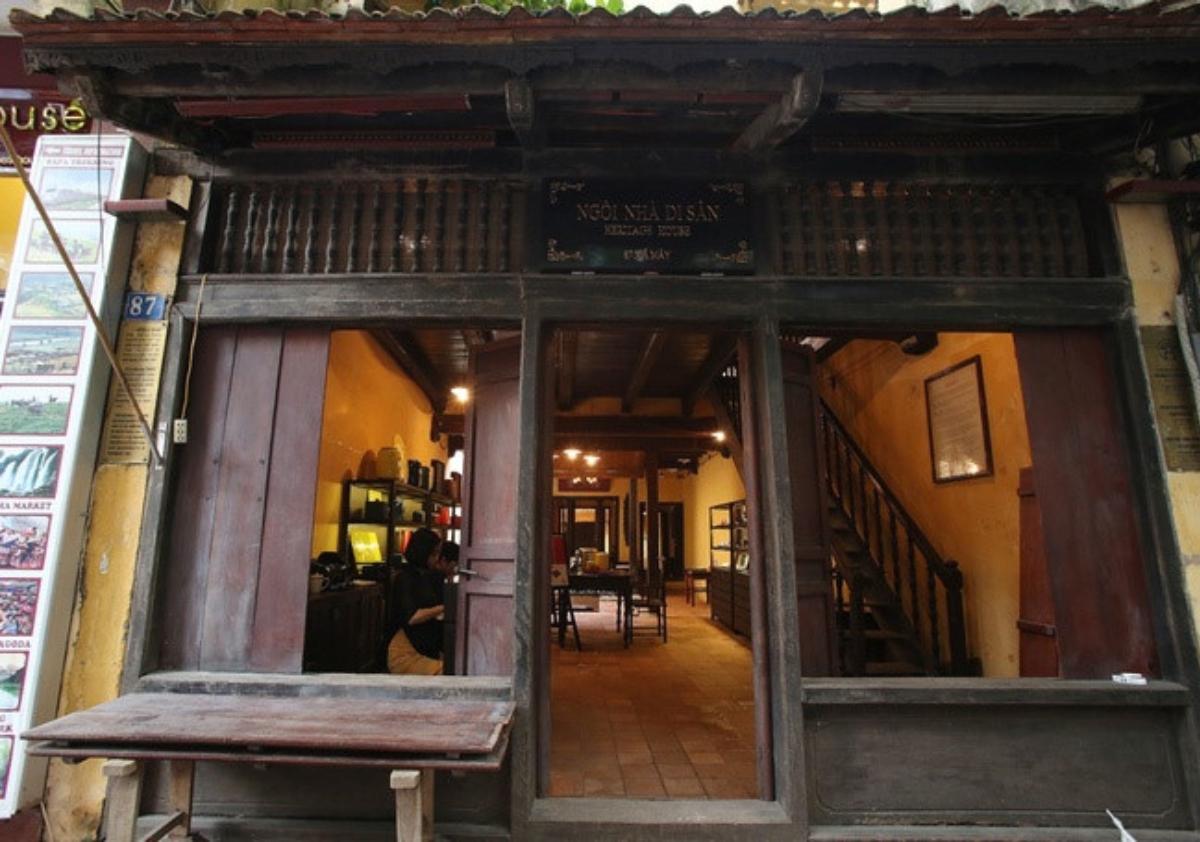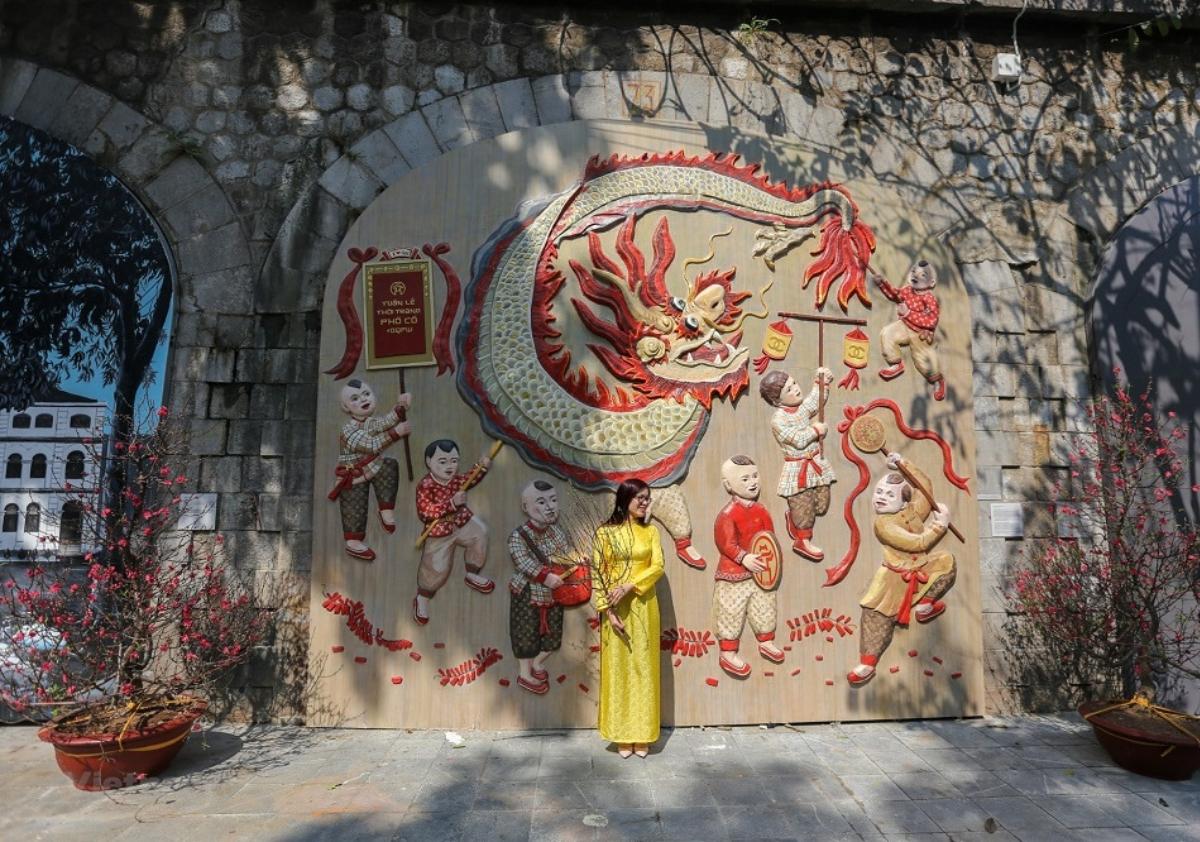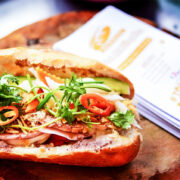
Check-in at the 10 Most Famous Tourist Spots in Hanoi’s Old Quarter
Hanoi’s Old Quarter, with its 36 ancient streets, is one of the capital’s most alluring destinations. This area is not only a vibrant living museum of Vietnam’s traditional architecture and culture but also a lively, modern space offering a diverse array of recreational activities.
As you stroll along its cobblestone streets, you’ll easily encounter centuries-old houses with unique architectural styles and traditional shops selling finely crafted artisan products. Every corner and every house tell its own story, recounting the rich history and culture of Hanoi. Join UniTourist in checking in at the top 10 most famous tourist spots in the Old Quarter!
Where is Hanoi’s Old Quarter and What Streets Does It Include?
Geographically, the Old Quarter is clearly defined by several boundaries: to the north by Hang Dau Street, to the west by Phung Hung Street, to the south by Hang Bong, Hang Gai, Cau Go, and Hang Thung Streets, and to the east by Tran Quang Khai and Tran Nhat Duat Streets. Covering approximately 100 hectares, this area encompasses 76 streets across 10 wards, forming a dense network of roads steeped in historical charm.

While Hanoi boasts many districts with historical significance, the Hoan Kiem District stands out as the area most representative of the Old Quarter. Consequently, this region is a focal point for government efforts in preservation and development, making it a must-visit for anyone traveling to Hanoi.
Note: When people refer to the “Hanoi 36 Streets” (Hà Nội 36 phố phường), they are using a conventional term to describe the broader ancient urban area, which includes not only the Old Quarter but also its surrounding areas.
History of Hanoi’s Old Quarter
Each street and house in Hanoi’s Old Quarter acts like a living page of history, vividly documenting the glorious past of the ancient capital, Thang Long. Despite covering a relatively modest area of 100 hectares, with 10 wards and 76 streets, this district offers a unique journey back in time, allowing you to discover a Hanoi from centuries ago, replete with its distinctive cultural traits.

Origins: The Old Quarter began to take shape during the Ly and Tran dynasties (11th century). At that time, it was a bustling commercial center of Thang Long, where trade and craftsmanship flourished. The architecture of the area reflects the characteristics of this period, with narrow “tube houses,” sloping tiled roofs, and warm, yellow-toned exteriors.
Historical Significance: Today, Hanoi’s Old Quarter is not only a renowned tourist destination but also a valuable cultural heritage of the Vietnamese people. Local authorities and residents continuously strive to preserve and promote the traditional values of this historic district, ensuring the continuity of Hanoi’s cultural identity.
What Makes Hanoi’s Old Quarter a Fascinating Tourist Destination?
Hanoi’s Old Quarter, with its 36 ancient streets, is a vibrant living museum of Vietnam’s history and culture. When visiting Hanoi, you cannot miss the opportunity to explore the narrow lanes, historic houses, ancient temples, sacred shrines, and bustling traditional markets. Below are the top 10 most famous tourist spots in the Old Quarter:
Hoan Kiem Lake (Lake of the Restored Sword)
When people think of Hanoi, the image of Hoan Kiem Lake (or Lake of the Restored Sword) immediately comes to mind. Not just a natural lake, Hoan Kiem is a sacred symbol deeply intertwined with the history and culture of the capital.
Legend and Significance: The name “Hoan Kiem” comes from the legend of King Le Thai To returning the magical sword to the Golden Turtle. This story has become an inseparable part of the Vietnamese national consciousness, symbolizing patriotism and the spirit of independence.

Location and Features: Situated at the heart of Hanoi, Hoan Kiem Lake is bordered by iconic streets such as Hang Dao, Hang Ngang, and Luong Van Can. Spanning approximately 12 hectares with an average depth of 1-1.4 meters, the lake offers a refreshing green space, ideal for both locals and visitors to relax and take leisurely walks. A major highlight of the lake is the Turtle Tower and Turtle Island, two cultural symbols that have existed for centuries.
Address: Hoan Kiem Lake, Hang Trong Ward, Hoan Kiem District, Hanoi.
Hang Ma Street
Located near Hoan Kiem Lake and Dong Xuan Market, Hang Ma Street is one of the most famous streets in Hanoi’s Old Quarter. With its prime location and long history, it has become a popular destination for both locals and tourists, especially during the Lunar New Year (Tet) and Mid-Autumn Festival.
History and Characteristics: In the past, Hang Ma Street was known for the craft of producing ritual paper items and handmade goods made from paper. Today, it retains its traditional charm while also adapting and diversifying its products to meet the demands of modern consumers.

A Shopping and Photo Paradise: During major holidays, Hang Ma Street transforms with vibrant decorations. Thousands of lanterns, Tet ornaments, peach blossoms, and chrysanthemums fill the street, creating a lively, festive atmosphere. This is an ideal spot to buy meaningful gifts for friends and family, as well as a perfect place for eye-catching photos.
Address: Hang Ma Street, Hang Ma Ward, Hoan Kiem District, Hanoi.
Ta Hien Street
Ta Hien Street has become a household name among those who love Hanoi. Located in the heart of the capital, this nearly 270-meter-long street is an essential meeting spot for both young locals and international visitors. In the evenings, Ta Hien comes alive with a bustling atmosphere, attracting thousands to enjoy its vibrant nightlife and experience Hanoi’s cultural spirit.

History and Characteristics: In the past, Ta Hien Street was closely associated with the famous Quang Lac Theater. While the street has undergone significant changes, it has preserved its old-world charm and nostalgic aura. The blend of ancient architecture with a modern atmosphere has made Ta Hien one of Hanoi’s most captivating destinations.
A Hotspot for Young People: Known as the “beer street,” Ta Hien offers a wide variety of bars and beer joints, each serving different types of beer. It’s not just a place to enjoy drinks but also a popular hangout for friends to meet, chat, and embrace the city’s vibrant nightlife.
Address: Ta Hien Street, Hang Buom Ward, Hoan Kiem District, Hanoi.
Dong Xuan Market
When talking about Hanoi, one cannot overlook Dong Xuan Market – one of the most iconic cultural landmarks of the capital. With its long history and bustling shopping environment, Dong Xuan Market has become a popular destination for both locals and tourists.
History and Development: Established in 1804, Dong Xuan Market has weathered the ups and downs of history. After a devastating fire in 1995, the market was rebuilt and expanded, becoming one of the largest markets in Northern Vietnam, with over 2,000 stalls.

A Culinary and Shopping Paradise: At Dong Xuan Market, visitors can explore a world of diverse culinary delights featuring Hanoi’s signature dishes. From familiar favorites like pho, bun cha, and banh cuon to tempting snacks such as banh ran, banh khuc, and sweet desserts like che, all can be found here. In addition, Dong Xuan Market is a shopping haven, offering a wide array of goods from clothing, footwear, and household items to exquisite handmade crafts.
Address: Dong Xuan Street, Hoan Kiem District, Hanoi.
O Quan Chuong Gate
When mentioning Hanoi, one cannot fail to mention O Quan Chuong Gate – another significant cultural symbol of the city. With its historical significance and strategic location, O Quan Chuong Gate has become a well-known landmark for both locals and visitors.

History and Significance: Built in the 18th century during the reign of the Le Dynasty, O Quan Chuong Gate is the only surviving gate of the old city walls. It was once a key defensive structure of the capital, protecting the city from invaders. Over time, the gate has become a symbol of Hanoi’s enduring history and its connection to both the ancient and modern eras.
Cultural and Architectural Importance: O Quan Chuong is an important piece of Hanoi’s heritage, and its architecture exemplifies the classic style of traditional Vietnamese gates. It serves as a reminder of the city’s past while blending harmoniously with the urban landscape that surrounds it.
Address: O Quan Chuong Gate, Hang Chuoi Street, Hoan Kiem District, Hanoi.
The Old House on Ma May Street
Tucked away in the heart of Hanoi’s Old Quarter, the Old House on Ma May Street is one of the best-preserved traditional homes in the city, showcasing the architecture of old Hanoi. With a history of over a century, the house at 87 Ma May has become an alluring destination for those wishing to explore the beauty of Hanoi’s ancient architecture and learn more about the traditional culture of the Vietnamese people.

Unique Architecture: The house was constructed using traditional Vietnamese architectural techniques, with a sturdy wooden structure, including wooden columns, beams, and rafters. Every corner and decorative detail in the house carries deep cultural significance, demonstrating the skill and craftsmanship of the artisans of the past.
A Cultural Haven: More than just a historical building, the Old House on Ma May Street also serves as a repository of traditional cultural values. Visitors have the opportunity to admire antique artifacts, learn about the daily life of ancient Hanoians, and enjoy captivating performances of Ca Tru, a traditional Vietnamese music genre.
Address: 87 Ma May Street, Hang Buom Ward, Hoan Kiem District, Hanoi.
Opening Hours: 8:00 AM – 8:00 PM daily.
Entrance Fee: 10,000 VND per person.
Bạch Mã Temple
Located at 76 Hàng Buồm Street, Hoàn Kiếm District, Bạch Mã Temple is one of the oldest and most sacred temples in Hanoi. With a history spanning over a thousand years, Bạch Mã Temple is not only an architectural masterpiece but also a repository of the profound cultural and spiritual values of the Vietnamese people.

History and Significance:
Bạch Mã Temple was constructed to honor Long Đỗ, the deity revered as the protector of the ancient Thăng Long Citadel. The temple was once part of the “Four Pillars” of Thăng Long, alongside Quán Thánh Temple, Kim Liên Temple, and Voi Phục Temple, playing a crucial role in safeguarding the citadel.
A Spiritual Destination:
Today, Bạch Mã Temple continues to attract a large number of locals and visitors who come to pay their respects and pray. The serene, solemn atmosphere, along with its mystical historical stories, makes it an unmissable spiritual destination for anyone visiting Hanoi.
Address: 76 Hàng Buồm Street, Hoàn Kiếm District, Hanoi City
Phùng Hưng Mural Street
Phùng Hưng Mural Street is a unique artistic destination in Hanoi, where vibrant murals are painted on the arches of ancient bridges, vividly depicting the daily life of old Hanoi. With a harmonious blend of modernity and tradition, Phùng Hưng Mural Street has become one of the most popular spots for young people to check in.

A Unique Artistic Space:
Each mural on Phùng Hưng Street tells its own story, showcasing the talent and perspective of the artists. Familiar scenes such as the Old Quarter, Hoàn Kiếm Lake, and Đồng Xuân Market are brought to life in a dynamic and nostalgic manner, allowing visitors to step into a Hanoi of the past.
An Ideal Destination for Travelers:
Not only is Phùng Hưng Mural Street an intriguing site for sightseeing, but it is also a perfect spot to enjoy the fresh air, take beautiful photos, and explore Hanoi’s culture.
Address: Phùng Hưng Street, Hàng Mã Ward, Hoàn Kiếm District, Hanoi City
Hanoi Old Quarter Night Market
Stretching nearly 3 kilometers along the historic streets of Hàng Đào, Hàng Ngang, Hàng Đường, and extending to the gate of Đồng Xuân Market, the Hanoi Old Quarter Night Market is an essential stop for anyone visiting the city. With thousands of stalls offering a wide variety of products, from handicrafts and clothing to local specialties, the night market has become a vibrant symphony of color, sound, and aroma, drawing in large crowds of both locals and tourists.

Shopping and Culinary Haven:
The night market is not only a shopping paradise but also a culinary heaven, offering an array of street food staples of Hanoi. Whether you’re craving familiar dishes like bánh mì chả, bún ốc, and phở cuốn, or looking for something new and unusual, you’ll find it here.
A Unique Cultural Experience:
Wandering through the night market, visitors can indulge in shopping, savor local delicacies, and immerse themselves in the lively, bustling atmosphere of the Old Quarter. The souvenir stalls and street performances contribute to an exceptional cultural ambiance that captures the spirit of Hanoi.
Ngọc Sơn Temple
Situated on the charming Ngọc Island in the heart of Hoàn Kiếm Lake, Ngọc Sơn Temple is one of the most renowned spiritual landmarks in Hanoi. With its unique architecture and rich history, Ngọc Sơn Temple is not only a sacred site but also a cultural symbol of the capital.

History and Architecture:
Built in the 19th century, Ngọc Sơn Temple is dedicated to several revered deities, including Văn Xương Đế Quân, Trần Hưng Đạo, and various Buddhist figures. The temple’s architecture is distinctive, featuring curved roofs, wooden pillars, and intricate carvings that reflect the traditional style of Vietnamese pagodas. The iconic Thê Húc Bridge, adorned with red lacquer and gold leaf, spans the lake and leads to the temple, making it one of Hanoi’s most recognizable symbols.
A Spiritual Destination:
Ngọc Sơn Temple is not just a place of worship, but also a popular destination for pilgrims and tourists alike. Every year, especially during festivals, the temple becomes a bustling site where visitors come to pray for peace, prosperity, and good fortune.
Visitor Guidelines:
When visiting Ngọc Sơn Temple, guests are encouraged to maintain the sacredness of the site by dressing modestly and adhering to the temple’s regulations.
These are the top 10 must-visit destinations in Hanoi’s Old Quarter, each offering a unique glimpse into the city’s rich history and culture. To ensure a memorable and meaningful trip, book a complete tour package with UniTourist by calling our hotline at 1900 2112.
Recent Posts
5 banh mi stalls draw crowds at Ho Chi Minh City festival
Vietnam’s largest reclining Buddha: the icon of Som Rong Pagoda
4 Vietnamese coffees among the world’s best
Tags

Thailand





